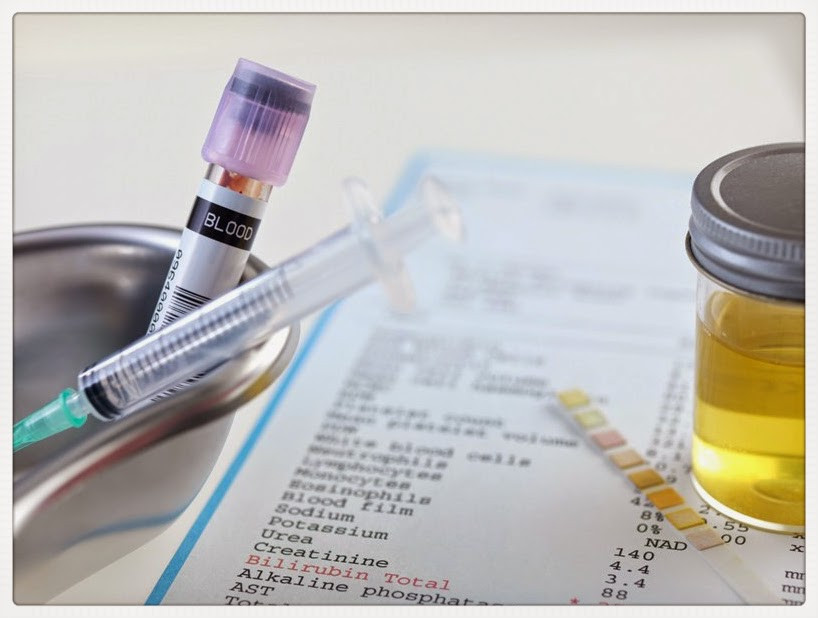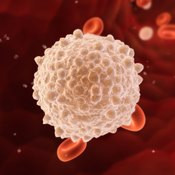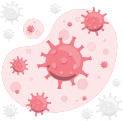Definition
Leukocytes, or white blood cells, are a crucial component of the blood that play a significant role in the body’s immune defense, especially during infections. Leukocytes are categorized into five distinct types based on their appearance and function:
-
Neutrophils: These are the most abundant type of leukocytes and serve as the body’s primary defense against bacterial and other microbial infections.
-
Lymphocytes: Lymphocytes are divided into two types of cells: B cells and T cells. B cells help protect the body from viral, bacterial, and toxic infections, while certain T cells specialize in destroying cancer cells within the body.
-
Monocytes: These cells are involved in fighting infections caused by germs, bacteria, and viruses. Monocytes also enhance the body’s immune response and play a role in the removal of dead cells.
-
Eosinophils: These are mainly involved in allergic reactions and provide defense against parasitic infections, including those caused by worms.
-
Basophils: These cells release enzymes that contribute to the processes of allergies and asthma.
Differential blood count is a test that measures the number of each type of leukocyte in the blood. The results of this test can be presented as whole numbers or percentages. Typically, this test is included as part of a comprehensive blood count.
Indication
Differential blood count is a key component of routine blood tests. Some of the main reasons for performing this test include:
-
Routine health check-ups
-
Diagnosis of bacterial, viral, or parasitic infections
-
Diagnosis of autoimmune disorders
-
Detection and evaluation of leukemia or other cancers
-
Diagnosis of inflammatory or allergic conditions
-
Identification of anemia (a condition of low red blood cell count)
Contraindication
There are no specific contraindications related to the differential blood count test.
Preparation Before the Test
No special preparation is required for the differential blood count test. However, certain medications, particularly steroids, can interfere with the accuracy of the test. It is important to discuss any medications you are taking with your doctor before the test. If you are undergoing other tests that require fasting, you may be asked not to eat for several hours before the procedure.
Test Procedure
The differential blood count test is a straightforward procedure. A healthcare professional will clean the skin on your arm with sterile alcohol and draw a small blood sample from a vein using a sterile syringe. In infants, blood is typically drawn from the heel. The blood sample is then placed into a test tube and analyzed by a specialized machine. The entire process usually takes no more than 5 minutes, and you can resume normal activities afterward.
The risks associated with the differential blood count test are minimal. Some individuals may experience mild discomfort, dizziness, or bruising at the site where blood was drawn, but these symptoms typically resolve quickly.
Normal and Abnormal Value
Each type of leukocyte has its own normal value range, and these can vary depending on factors such as age and gender. Below is the standard normal range for leukocyte types in adults and children:
|
Leukocyte Type |
Normal Value Range (%) |
|
Neutrophils |
40-60 |
|
Lymphocytes |
20-40 |
|
Monocytes |
2-8 |
|
Eosinophils |
1-4 |
|
Basophils |
0.5-1 |
|
Band (Neutrophil Rods) |
0-3 |
Results and Recommendations (Follow-up Tests)
Low
A low differential blood count, also known as leukopenia, can be caused by several factors, including bone marrow disorders, severe infections, chemotherapy, and exposure to radiation. Further diagnostic tests such as blood smears or bone marrow examinations may be recommended by your doctor to identify the root cause. Specific conditions that lead to low levels in particular leukocyte types include:
-
Low neutrophil count (neutropenia): This can be caused by bone marrow disorders, viral infections, severe bacterial infections, chemotherapy, or radiation exposure.
-
Low lymphocyte count (lymphopenia): This may result from HIV/AIDS, use of steroid medications, severe bacterial or viral infections, leukemia, chemotherapy, or radiation therapy.
-
Low basophil count: This may be linked to acute infections, cancers, or significant physical trauma
Normal
A normal differential blood count indicates a well-balanced and healthy condition of the white blood cells. To maintain this balance, it is important to eat a nutritious diet, engage in regular physical activity, and undergo regular health check-ups.
High
An elevated differential blood count is often associated with various conditions, including infections, malignancies, rheumatic diseases, and allergies. If your leukocyte count is high, your doctor may recommend further tests such as blood cultures, malignancy markers, or skin prick tests for allergies. Some of the potential causes for an increased leukocyte count include:
-
High neutrophil count: This can result from acute infections, physical trauma, eclampsia (seizures during pregnancy), elevated uric acid levels, leukemia, rheumatic diseases, thyroid disorders, or stress.
-
High lymphocyte count: This may be caused by chronic bacterial infections, liver or lymph node infections, leukemia, multiple myeloma (a form of blood cancer), and viral infections.
-
High monocyte count: Conditions such as chronic inflammation, leukemia, parasitic infections, tuberculosis (lung infection), and viral infections can cause an increase in monocytes.
-
High eosinophil count: Allergies, leukemia, parasitic infections, adrenal gland disorders, and hypereosinophilic syndrome can lead to elevated eosinophil levels.
-
High basophil count: This can be linked to allergies, leukemia, bone marrow disorders, and the removal of the spleen.
Consult the Right Doctor
If your differential blood count is abnormal, it is advisable to consult a general practitioner for an accurate diagnosis and appropriate treatment. In more complex cases, you may also be referred to an internist for further evaluation. For pediatric patients, a pediatrician will be able to provide more specialized care and treatment.
Looking for more information about laboratory, radiology, and other examination results? Click here!
- dr Hanifa Rahma
Blood Differential. (2022). Retrieved 13 July 2022, from https://medlineplus.gov/lab-tests/blood-differential/
Blood Differential. (2022). Retrieved 13 July 2022, from https://www.ucsfhealth.org/medical-tests/blood-differential-test
Blood differential test Information. (2022). Retrieved 13 July 2022, from https://www.mountsinai.org/health-library/tests/blood-differential-test
What Is a Differential Blood Count?. (2022). Retrieved 13 July 2022, from https://www.webmd.com/a-to-z-guides/what-is-differential-blood-count
Blood differential test. (2019). Retrieved 13 July 2022, from https://www.ucsfbenioffchildrens.org/medical-tests/blood-differential-test










